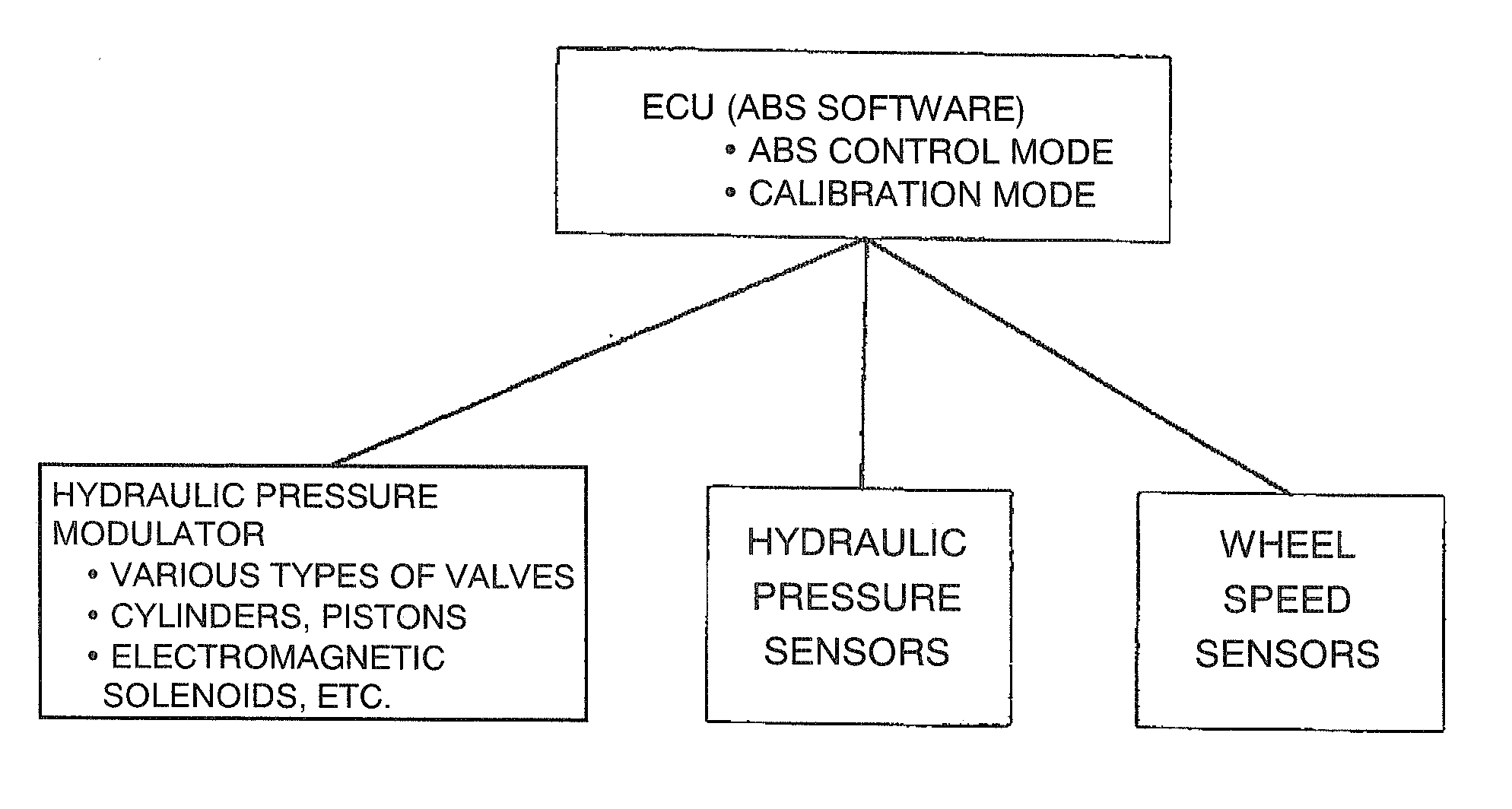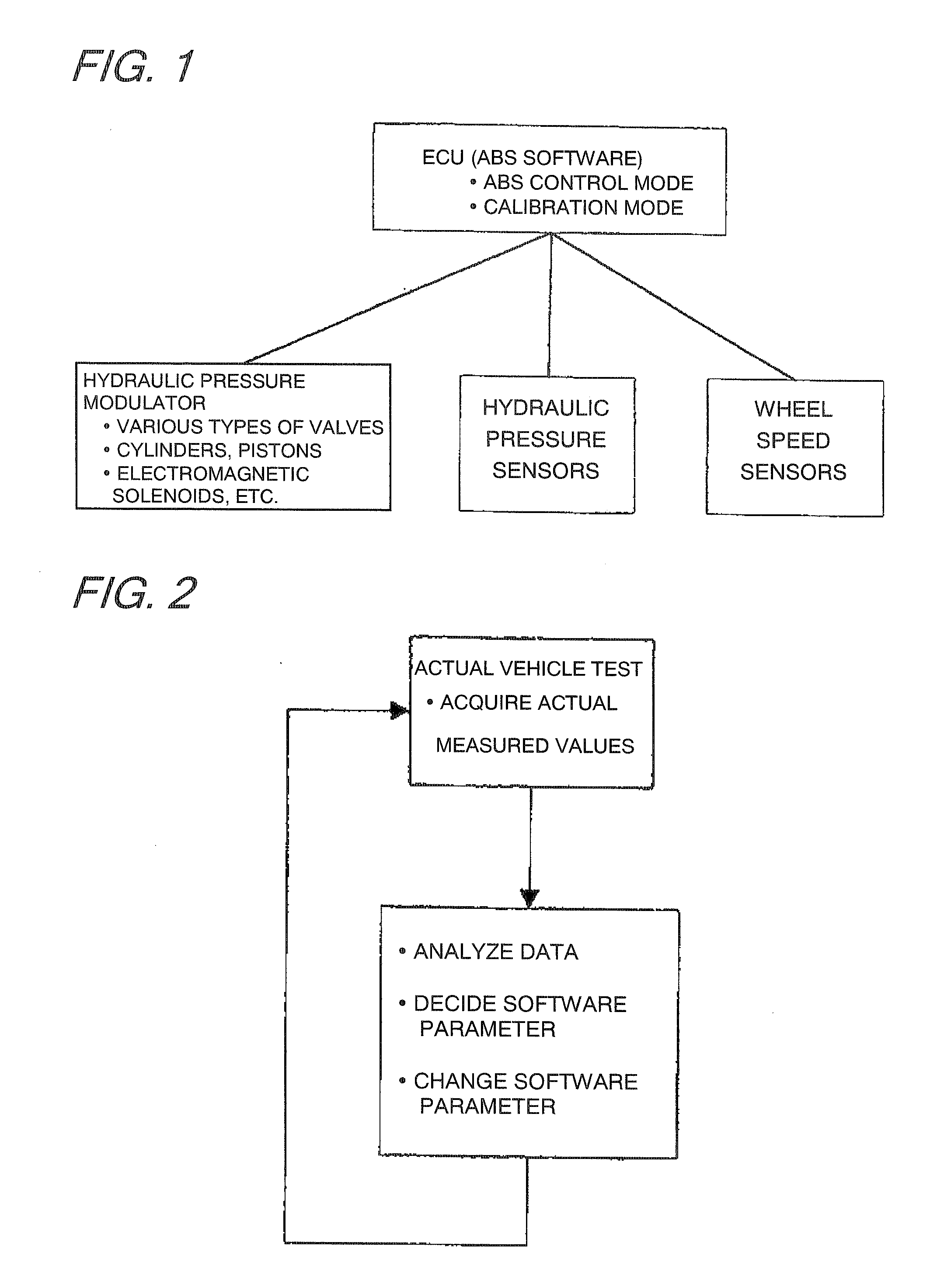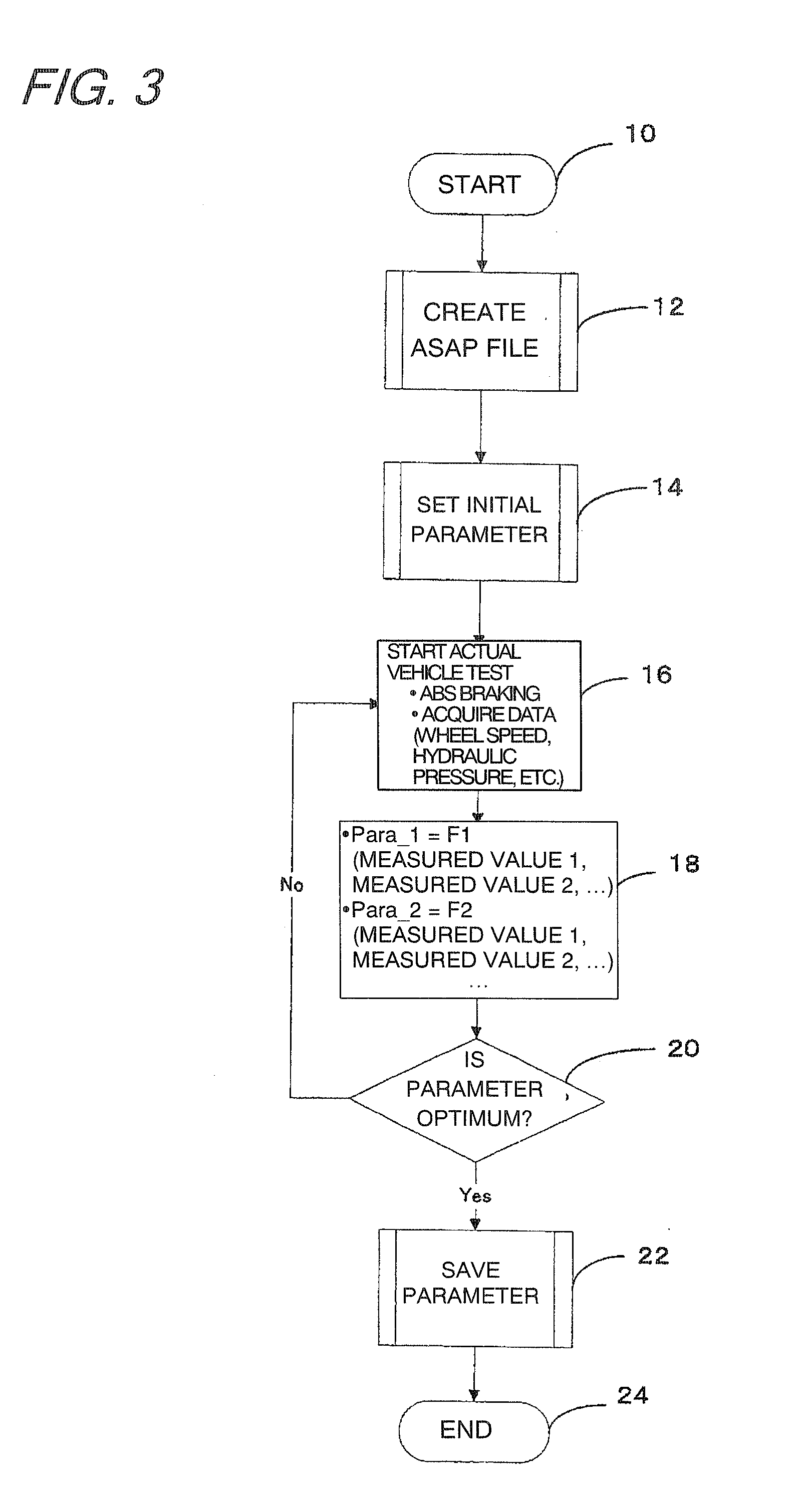Vehicular abs control system with internal parameter automatic calibration function
a control system and abs technology, applied in the direction of braking systems, process and machine control, instruments, etc., can solve the problem of achieving optimal abs braking, and achieve the effect of significantly shortening the design and manufacturing process of abs
- Summary
- Abstract
- Description
- Claims
- Application Information
AI Technical Summary
Benefits of technology
Problems solved by technology
Method used
Image
Examples
example 1
[0039]Calibration of a brake hydraulic pressure characteristic curve in a wheel pressure model will be described.
[0040]As shown in FIG. 4, a pressure reducing valve is driven for a certain amount of time and at regular intervals from a predetermined hydraulic pressure (e.g., about 10 MPa), and the hydraulic pressure values are measured. Thus, the hydraulic pressure gradient (MPa / s) at each hydraulic pressure can be calculated. By performing this per each wheel, a hydraulic pressure-hydraulic pressure gradient characteristic curve such as in FIG. 5 can be obtained per each wheel. The value of this characteristic curve is set in the ABS software as a new parameter. Regarding the method of optimizing the value of this characteristic curve, for example, the hydraulic pressure values can be measured multiple times and the mean value can be used as the optimum value. Alternatively, if the difference between the characteristic curve that has been calculated from the previous measurement an...
example 2
[0041]Calibration of the coefficient of braking force transmission in a braking force model will be described. The braking force relationship can be given by the following equation.
F(braking force)=m(vehicle mass)×a(deceleration)=CP—FA×(P—FL+P—FR)+CP—RA×(P—RL+P—RR)
[0042]Here, CP_FA is the coefficient of braking force transmission of the front wheels, CP_RA is the coefficient of braking force transmission of the rear wheels, P_FL is the hydraulic pressure of the front left wheel, P_FR is the hydraulic pressure of the front right wheel, P_RL is the hydraulic pressure of the rear left wheel, and P_RR is the hydraulic pressure of the rear right wheel.
[0043]The coefficient of braking force transmission of the front wheels can be obtained with the equation CP_FA=m·a / (P_FL+P_FR) by restricting the brake hydraulic pressure of the rear wheels to 0 MPa and performing an actual vehicle test. The deceleration a can be estimated from the quantity of change in the wheel speed. The method of estim...
example 3
[0044]A parameter relating to a master cylinder hydraulic pressure model will be described. The initial value of the master cylinder pressure model value at the time the ABS starts can be estimated from the deceleration of the wheels. The master cylinder pressure P at the time ABS control starts and the wheel deceleration a at that time can be measured to obtain an approximate curve and the optimum parameter like in FIG. 6. The approximate curve can be obtained by an arbitrary approximation method such as the least-square method. Different parameters may be used for the front wheels and the rear wheels.
[0045]Here, a threshold value of correction with respect to over-braking will be described. When the brake pedal force is increased, the wheel pressure increase gain rises, and the wheel motion and the ABS control cycle change. Therefore, in such cases, it is necessary to correct the master cylinder model value. The over-braking correction value is usually obtained from the wheel acce...
PUM
 Login to View More
Login to View More Abstract
Description
Claims
Application Information
 Login to View More
Login to View More - R&D
- Intellectual Property
- Life Sciences
- Materials
- Tech Scout
- Unparalleled Data Quality
- Higher Quality Content
- 60% Fewer Hallucinations
Browse by: Latest US Patents, China's latest patents, Technical Efficacy Thesaurus, Application Domain, Technology Topic, Popular Technical Reports.
© 2025 PatSnap. All rights reserved.Legal|Privacy policy|Modern Slavery Act Transparency Statement|Sitemap|About US| Contact US: help@patsnap.com



